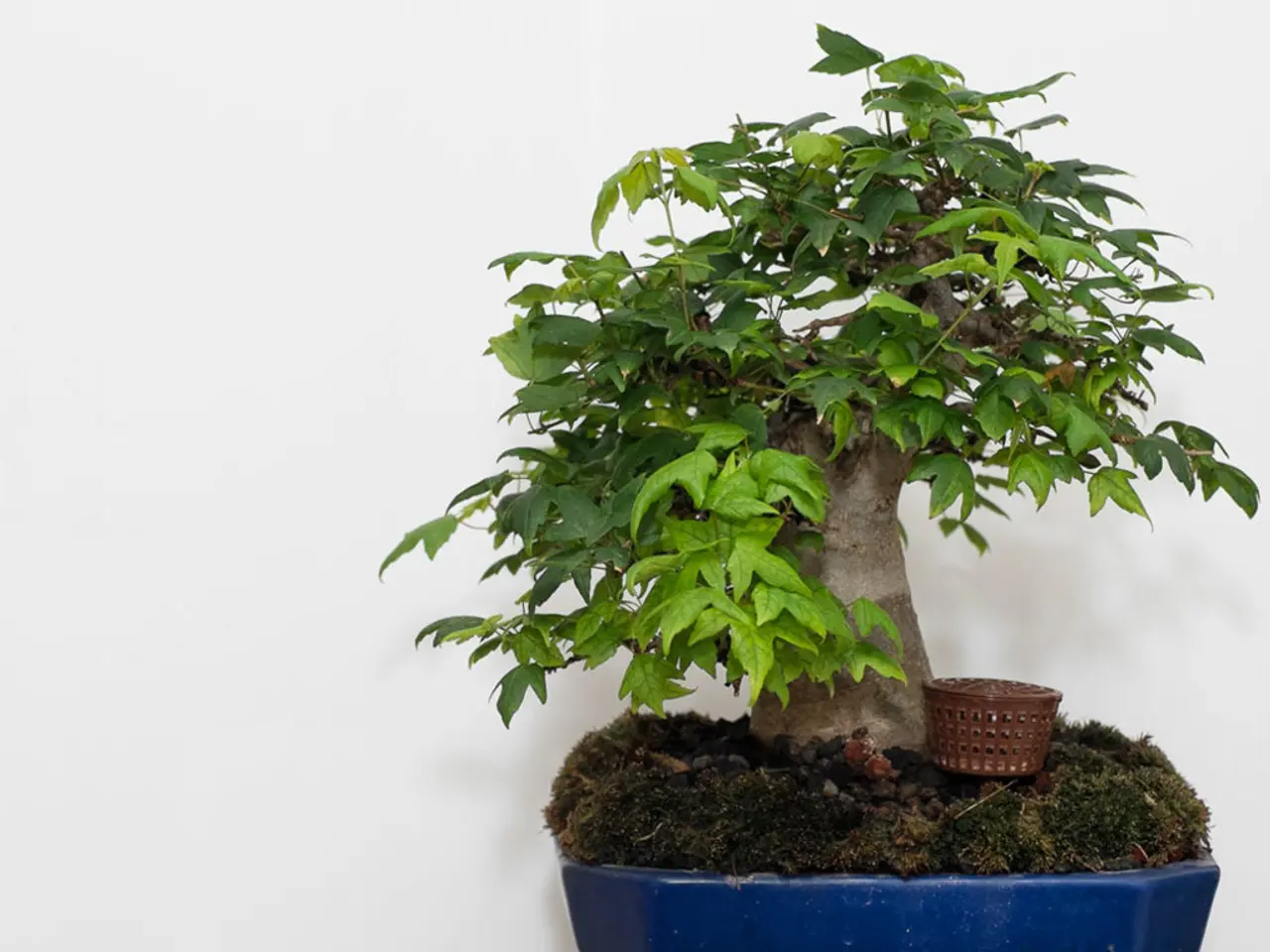Underwatering Bonsai: Recognizing Symptoms and Fixing Problems
In the intricate world of Bonsai cultivation, the subtle nuances of hydration play a critical role in the health and vitality of these delicate, miniature wonders. Accurate soil moisture assessment is key to preventing underwatering, a common issue that can lead to wilting, yellowing, and even tree death.
To assess soil moisture levels, there are several practical methods at your disposal. The finger test, for instance, involves inserting your finger about 1 to 2 inches deep into the soil. If it feels dry, it's time to water. The chopstick test, similar to its finger counterpart, uses a chopstick to assess moisture by sticking it into the soil about 1 cm deep. If the chopstick comes out dry or with a small amount of moisture, the soil is dry.
Soil inspection is another effective method. Dry soil will appear lighter and more crumbly compared to moist soil, which retains its darker colour and structure. Additionally, water when the top half-inch of the soil feels slightly dry. This frequency can vary depending on climate, soil type, and tree species.
To prevent underwatering, using a well-draining soil mix is essential. This helps prevent waterlogged soil and root rot, common causes of leaf drop and tree stress. Regularly checking for signs of underwatering, such as yellowing, wilting, or dried leaves, is also crucial. If you notice these symptoms, act quickly to prevent further damage.
If the tree is extremely dry, the immersion method can be used. Submerge the pot in water for a few minutes until bubbles cease to rise, ensuring thorough watering and helping restore moisture balance.
For indoor Bonsai trees, maintaining a humid environment is beneficial. Regularly misting the tree helps maintain optimal moisture levels around it, especially in dry environments. Adjust watering frequency based on the tree's environment, more frequent watering may be needed in hot or sunny conditions, while less may be required in cooler or shaded areas.
Deep watering, which involves saturating the entire root system, guarantees that every corner of the tree receives the necessary moisture. Repotting a Bonsai can also be a liberating solution to resolve recurring underwatering issues.
Seasonal adjustments to watering frequency are necessary, with increased hydration needs during the active growing seasons of spring and summer, and reduced watering during the dormant periods of fall and winter. Warmer temperatures increase water evaporation, necessitating more frequent watering.
In humid climates, trees may thrive with less frequent watering, as the air's moisture helps to supplement their water needs. In dry, arid environments, trees may require more frequent watering to compensate for the rapid evaporation of moisture from the soil.
To prevent future underwatering issues, remember to monitor soil moisture levels regularly, adjust watering frequency based on environmental factors, implement deep watering techniques, observe trees closely, keep a watering journal, and frequently repot and prune to prevent rootbound conditions.
Automated watering systems can be beneficial for Bonsai trees, but it's vital to select a system tailored to the tree's specific needs and adjust it accordingly to avoid overwatering. Different Bonsai tree species have unique watering requirements, requiring examination of the specific needs of the tree.
Overfertilization can masquerade as underwatering in Bonsai, leading to a mistaken diagnosis and potential exacerbation of the problem. In low humidity, trees may require more frequent watering to compensate for rapid evaporation of moisture from the soil.
In dry, arid environments, trees may require more frequent watering to compensate for the rapid evaporation of moisture from the soil. Rootbound Bonsai can also masquerade as underwatered, leading to a misdiagnosis that hinders effective treatment.
Factors affecting watering frequency include temperature, humidity, climate, tree species, and soil type, requiring adjustments to the watering schedule. Touch tests and visual inspections are essential tools in this endeavour, allowing you to feel for moisture levels and observe the soil's colour and texture, looking for signs of dryness or moisture.
By mastering these techniques, you'll be well on your way to keeping your Bonsai thriving and healthy, ensuring that these delicate, miniature wonders continue to captivate and inspire.
Here are two sentences that include the words 'lifestyle', 'home-and-garden', and 'gardening':
- Caring for a Bonsai tree can be a rewarding addition to one's home-and-garden lifestyle, offering a unique blend of gardening and artistry.
- Gardening enthusiasts may find the intricate process of Bonsai cultivation an engaging new challenge, bringing a fresh perspective to their gardening lifestyle.




